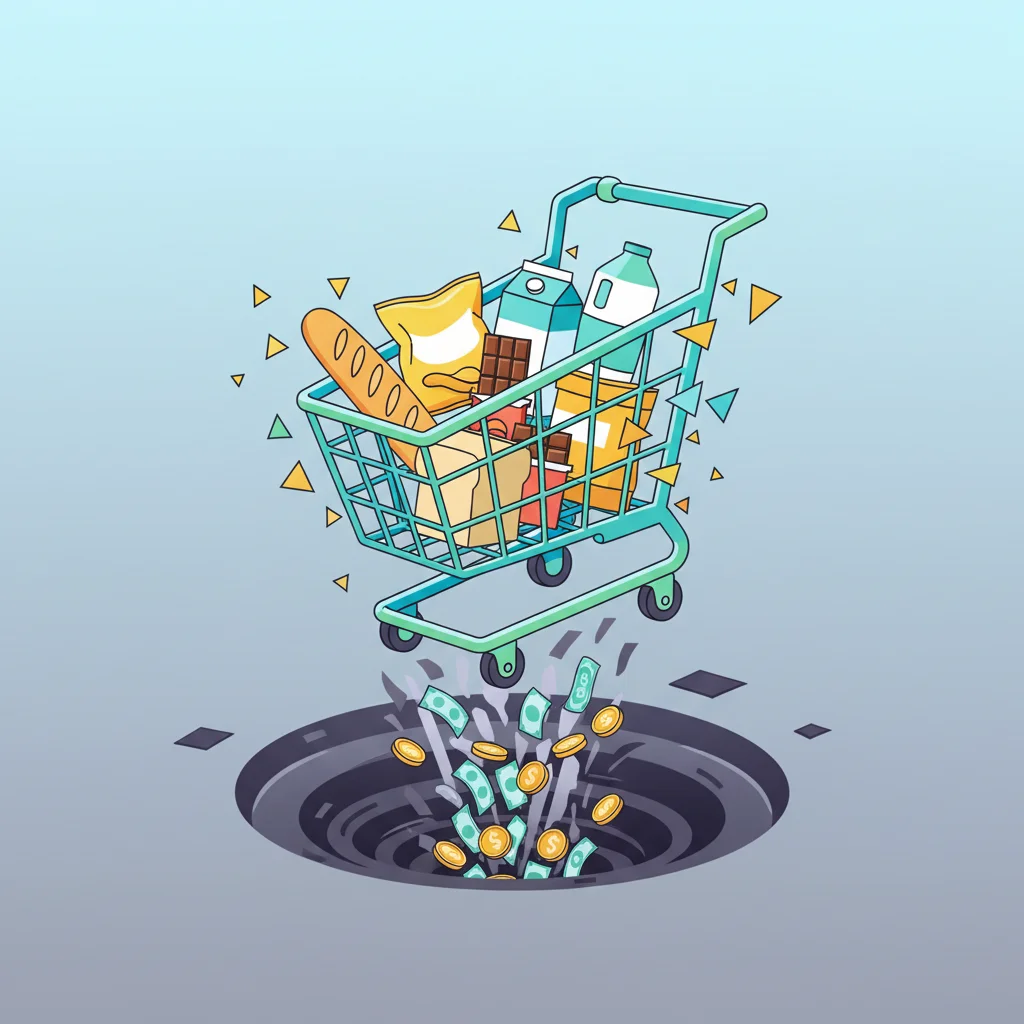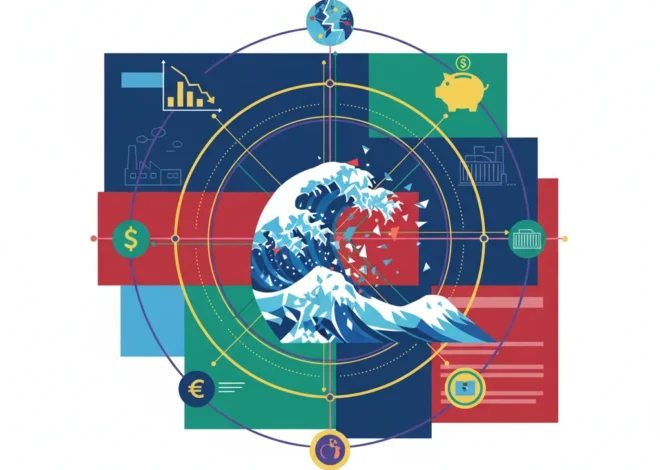
The Incredible Shrinking Shopping Cart: How “Shrinkflation” is Silently Eroding Your Wealth
Have you ever reached for your favorite snack, only to feel the bag is lighter, the chocolate bar thinner, or the number of biscuits suspiciously lower? You’re not imagining things. You’re experiencing “shrinkflation,” a subtle yet powerful economic force that is reshaping the consumer landscape. While the price on the sticker may remain the same, the value you receive is diminishing. This isn’t just a frustration for shoppers; it’s a critical phenomenon with profound implications for personal finance, the broader economy, and investment strategies.
In this deep dive, we will unmask the mechanics of shrinkflation, explore the economic pressures driving this trend, and analyze its impact on everything from your household budget to the stock market. For consumers, business leaders, and investors alike, understanding this hidden form of inflation is no longer optional—it’s essential for navigating today’s complex financial world.
What Exactly is Shrinkflation? The Art of Less for More
Shrinkflation is the practice of reducing the size or quantity of a product while maintaining or even slightly increasing its price. It’s a strategic move by manufacturers to protect their profit margins without alarming consumers with a direct price hike. Think of it as inflation’s stealthy cousin. While standard inflation raises the price you pay for the same item, shrinkflation gives you less of the item for the same price.
This tactic plays on consumer psychology. Most shoppers are more sensitive to price changes (price elasticity) than they are to subtle changes in net weight or volume. A consumer might balk at their favorite coffee going from $10 to $12, but they may not notice if the bag quietly slims down from 12 ounces to 10.5 ounces. This is a calculated decision in corporate boardrooms, driven by a desire to balance rising costs with customer retention.
The practice is widespread across numerous sectors. According to research from Barclays, groceries and restaurants are the most common areas where consumers notice this downsizing, a clear indicator of its prevalence in the consumer staples industry.
The Economic Engine Behind the Shrink Ray
Companies don’t engage in shrinkflation arbitrarily. It is a direct response to a challenging economic environment. The primary drivers are rising input costs across the board. This includes:
- Raw Materials: The cost of agricultural commodities, packaging materials like plastic and cardboard, and other essential ingredients has soared due to supply chain disruptions, climate events, and geopolitical tensions.
- Energy Prices: Higher fuel and electricity costs increase the expense of manufacturing, processing, and transporting goods from the factory to the store shelf.
- Labor Costs: A competitive labor market and rising wage demands put upward pressure on a company’s operational budget.
Faced with these escalating expenses, businesses are caught between a rock and a hard place. They can absorb the costs and accept lower profit margins, which is often untenable for publicly traded companies accountable to the stock market. They can raise prices, risking a drop in sales volume as consumers switch to cheaper alternatives. Or, they can choose the third path: shrinkflation. By subtly reducing product size, they can effectively increase the price per unit without changing the sticker price, thereby preserving their margins.
This isn’t merely a theoretical concept in economics; it’s a reality reflected in corporate statements. For instance, Unilever, the parent company of brands like Magnum ice cream, has openly acknowledged that it is reducing the size of some of its products to cope with rising costs (source).
Real-World Examples and the Impact on Economic Data
The evidence of shrinkflation is in every aisle of the supermarket. While anecdotes abound, data confirms the trend. Below is a table illustrating some notable examples, many of which have been highlighted by consumer watchdogs and news reports.
| Product Category | Brand/Product | Change Noted |
|---|---|---|
| Confectionery | Quality Street | Tins have shrunk from 1kg to 600g over several years. |
| Personal Care | Listerine Mouthwash | Bottle size reduced from 500ml to 400ml in some regions. |
| Household Goods | Andrex Toilet Paper | Rolls reduced from 200 sheets to 190, and later to 170. |
| Frozen Goods | Magnum Ice Cream | Multipacks reduced from four ice creams to three in some cases. |
| Snacks | Doritos | Sharing bags have seen reductions in weight over time. |
Beyond consumer frustration, shrinkflation poses a significant challenge for economists and policymakers. Official inflation figures, like the Consumer Price Index (CPI), are designed to measure the change in prices for a fixed basket of goods. However, if the goods in that basket are shrinking, the CPI might understate the true rise in the cost of living. Statistical agencies like the UK’s Office for National Statistics (ONS) attempt to account for these changes in quality and quantity, but it’s an incredibly complex task. The ONS has noted that while it doesn’t believe shrinkflation has a significant impact on overall inflation figures (source), the persistent nature of the practice means its cumulative effect can be substantial for household budgets.
An Investor’s Guide to a Shrinking World
For those involved in finance and investing, shrinkflation is more than a consumer issue—it’s a critical piece of company analysis. When examining a company, especially in the consumer staples or discretionary sectors, it’s no longer enough to look at top-line revenue growth. Investors must dig deeper.
- Volume vs. Price/Mix: Scrutinize quarterly earnings reports. Is revenue growth being driven by selling more units (volume), or is it from price increases and shrinkflation (price/mix)? A company that relies solely on price hikes and downsizing for growth may have a weaker underlying business than one that is increasing its sales volume.
- Brand Strength and Pricing Power: Shrinkflation can be a sign of a company’s pricing power—its ability to raise effective prices without losing customers. However, it can also be a sign of desperation. A key question for investors is whether the company is leading the market with these changes or simply following competitors in a race to the bottom.
- Stock Market Implications: Companies that successfully implement this strategy can protect their margins and deliver stable returns, which can be attractive to the stock market in an inflationary environment. However, if the strategy backfires and leads to a loss of market share, the stock could suffer. Watch for shifts in consumer behavior and market share data as key indicators.
Understanding these dynamics is crucial for effective trading and long-term investing in consumer-facing industries. The ability to differentiate between sustainable growth and margin-padding tactics is a hallmark of a sophisticated investor.
A Turning Tide? Unpacking the UK's Surprise Inflation Drop and What It Means for the Economy
The Future: Can Technology Combat Shrinkflation?
As this trend continues, the intersection of finance and technology may offer solutions for consumers. The rise of financial technology, or fintech, could empower shoppers to fight back against hidden price increases.
Imagine a budgeting app that doesn’t just track your spending but also tracks unit prices. By scanning barcodes or integrating with retailer data, a fintech application could alert you that while your grocery bill is stable, the unit price of your favorite yogurt has increased by 15% due to a smaller container. This level of transparency would shift the power dynamic back towards the consumer. Modern banking and financial technology platforms are increasingly focused on providing users with actionable insights into their financial health, and exposing shrinkflation is a logical next step.
On a more speculative front, technologies like blockchain could offer unprecedented supply chain transparency. A decentralized ledger could track a product from its raw materials to the final package, making any changes to size, weight, or ingredients instantly auditable. While this is a long-term vision, it highlights how technological innovation could enforce a new standard of corporate accountability.
The £2.1 Billion Keyboard Stroke: How a Cyber Attack Became the UK's Costliest Financial Disaster
Conclusion: Navigating the New Consumer Reality
Shrinkflation is a complex economic phenomenon that is far more than a minor annoyance. It is a direct consequence of global economic pressures and a core strategy for corporate survival and profitability. It impacts household finances, distorts economic data, and presents both risks and opportunities for the investing community.
As consumers, the best defense is vigilance—paying close attention to unit pricing, net weights, and quantities. As investors and finance professionals, the key is to look beyond the headlines and analyze the underlying drivers of corporate performance. In this ever-evolving economy, it’s clear that the biggest value comes not just from what you buy, but from understanding the hidden forces that determine how much you truly get for your money.


